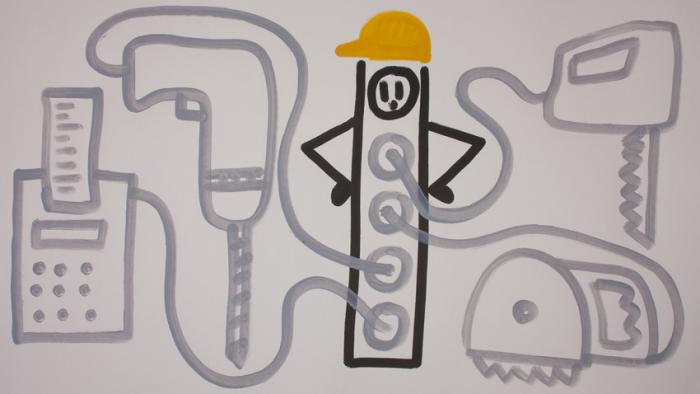Don’t Let Outdated Management Structures Kill Your Company

During a consulting engagement at a $50 billion conglomerate, I spoke with a young man who was worried about a potential project overrun. I asked if he had hit a stumbling block. “It really isn’t a big deal —I know we have the in-house expertise to solve this,” he said. “I just need to rope in some colleagues from another team.” “So what’s the problem?” I asked. “I’m waiting for my boss to give me the go-ahead,” he replied.
This company operates on a hub-and-spoke management structure, where significant decisions are referred to one’s formal boss rather than to whoever is best suited to make the call, regardless of hierarchical positioning. The management structure gave the company the ability to make decisions quickly in the early days. Now, though, it is slowing the organization down, due to its inherent inability to enable quick, cross-functional, collaborative decisions. (In this company, like so many others, most significant value creation now occurs through the work of cross-functional project teams.)
The management of this company has noticed this lag and asked for help answering a question: Does it need to review its management structure to enable better collaboration between individual teams?
In the hub-and-spoke model, each area is optimized to deliver results to and curry favor with the higher-ups (or, in the metaphor of hub and spokes, the center). In today’s fast-paced marketplace, teams that need to wait for a leader to weigh in have lost the game before they start. Leaders instead need to paint a vivid horizon that inspires self-propelling teams to forge ahead with real-time collaboration — then step out of their way.
That shift implies something really important about the changing nature of leadership. Kevin Martin, chief research officer of i4cp, says “Organizations must look at leaders through a different lens. Business skills and acumen…are now table stakes. It’s the ability to influence and drive collaboration across cultures, boundaries, and borders that has the greater variability on global leadership effectiveness.”
Obviously, the shift in leadership competence requires complementary shifts in organizational structure, decision-making processes, and performance-management systems. Instead of a hub-and-spoke system, picture a racing track where each driverless team can compete successfully on the basis of four fundamentals:
- Overlapping goals. Goals will have significant overlaps; each individual and each team understands that they are pursuing one collective organizational goal.
- Role linkages. Each individual, team, and function will play a distinct role in the race while also supporting each other’s roles. Every individual has to be clear about how the individual, team, and organizational roles are linked.
- Constant collaboration. At the foundation of this model is the fact that no one individual or team can win the race alone. They will win only if they play their roles to perfection and help others that they’re linked to.
- Continuous reinvention. Teams will continuously process new data, creating a landscape of learning and realignment across levels.
There are some early signs of a movement away from hub-and-spoke management. One of the central tools of that system was the ubiquitous performance review. Today, 6% of Fortune 500 companies are reported to have gotten rid of rankings, according to management research firm CEB. These companies include big names like Microsoft, Adobe, Gap, and Medtronic. Recently, Accenture CEO Pierre Nanterme told The Washington Post that his company, too, is getting rid of the annual performance review as of Fall 2016, terming the move a “massive revolution.”
The million-dollar question that my clients ask me now: Is all this change worth the risk? My response is simple: There is no alternative. You have to make this change if you want to survive.
Originally posted on Vineet Nayar’s Blog site on Harvard Business Review: https://hbr.org/2016/02/dont-let-outdated-management-structures-kill-your-company

